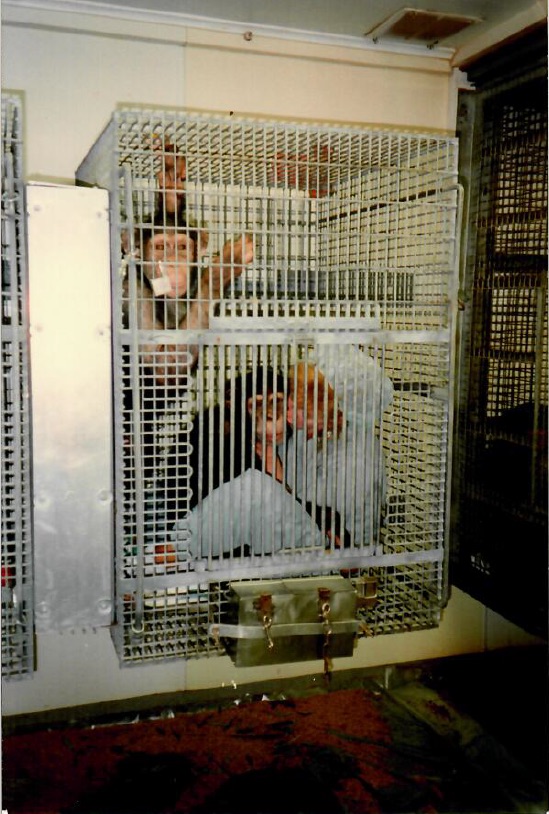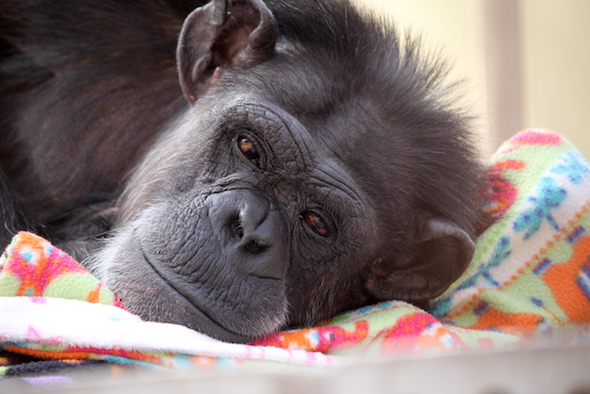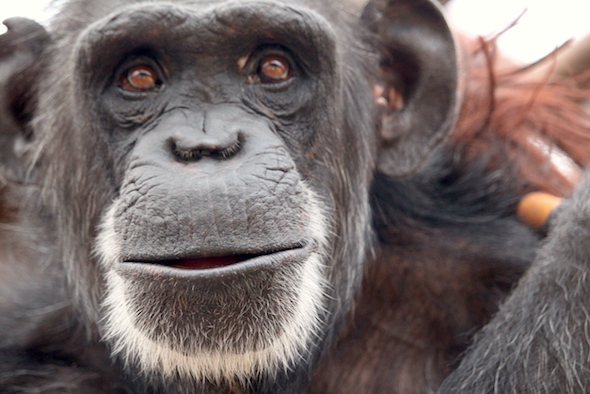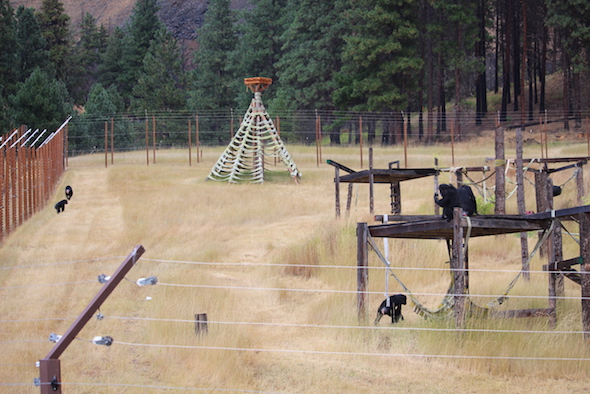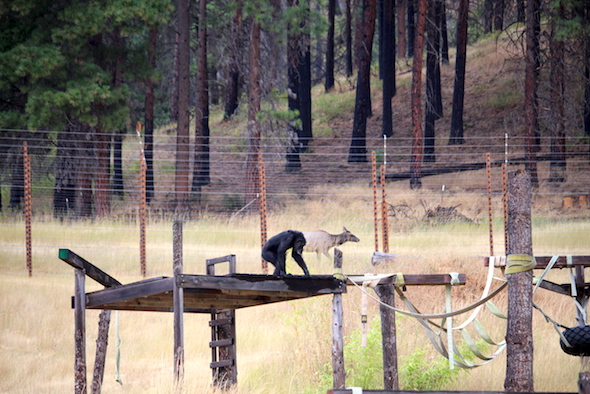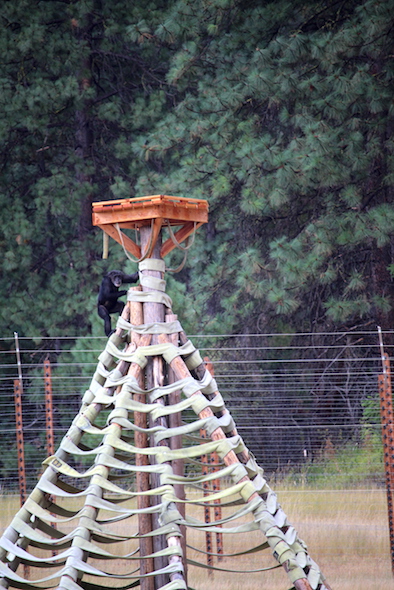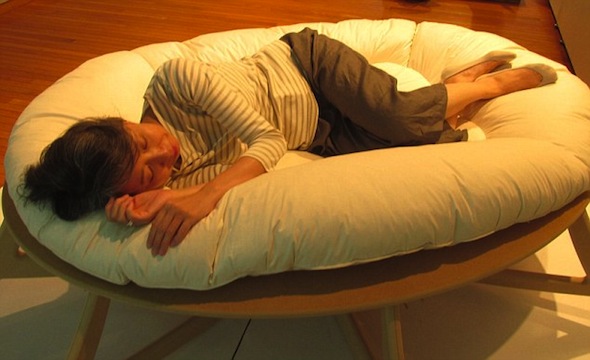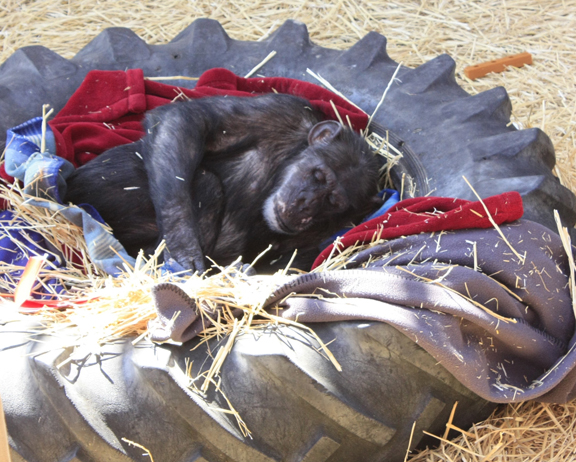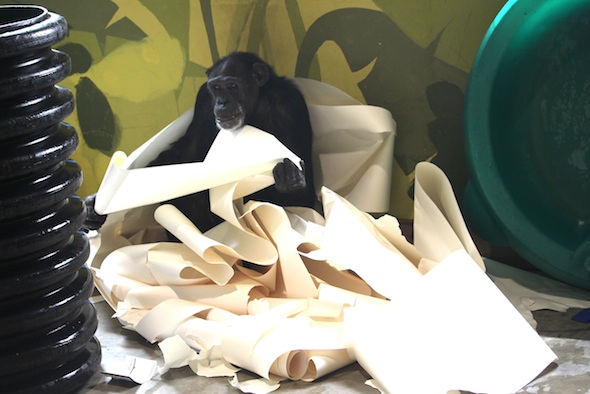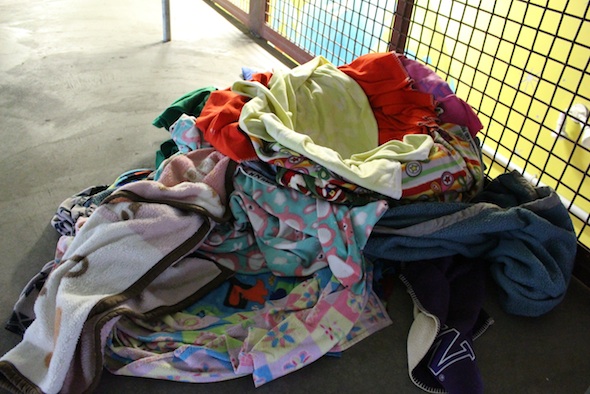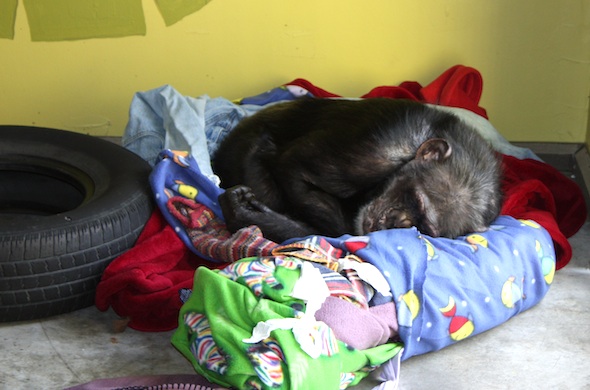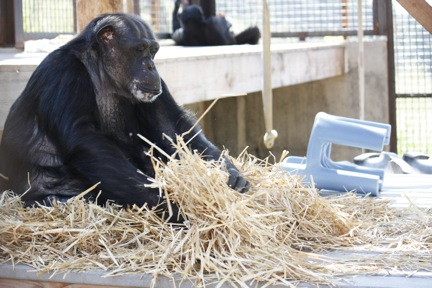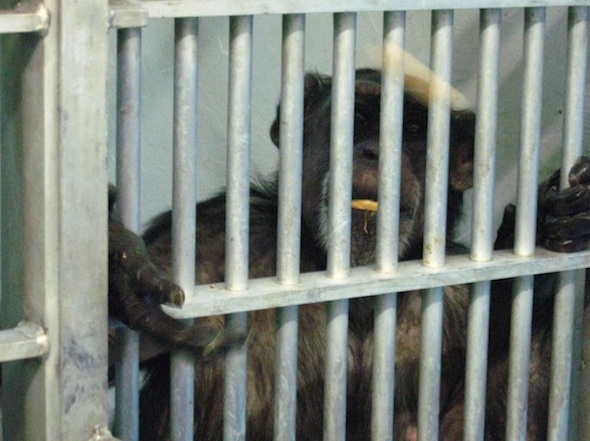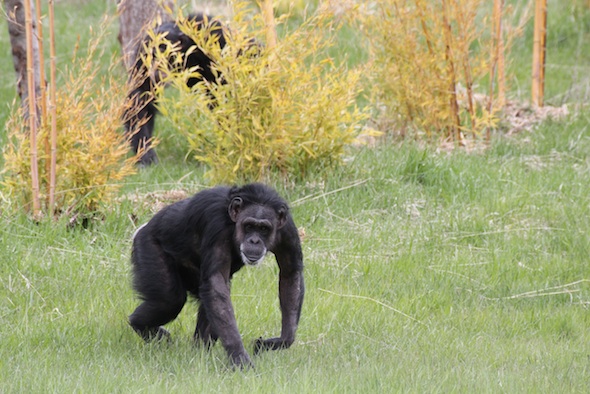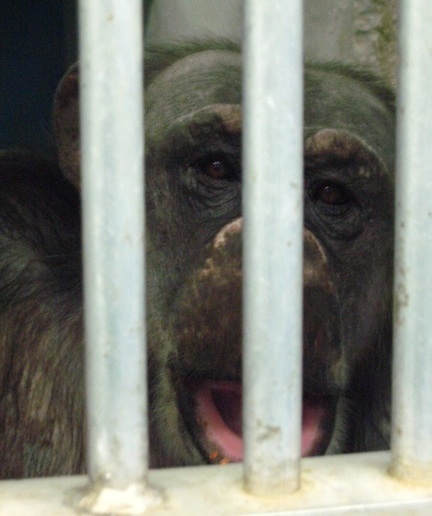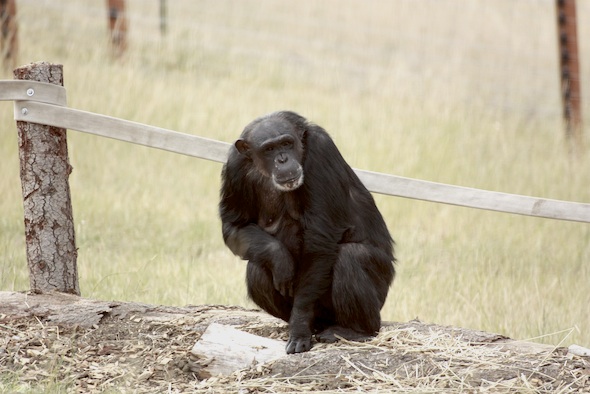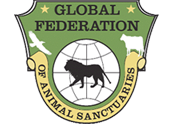An old friend shared a story with us recently that moved me so much I felt compelled to share it with you.
As some of you know, Diana and I worked at the Fauna Foundation in Quebec in the late ’90s and early 2000s. During that time we got to know a few of the people that had known the Fauna chimps when they were at the lab, and the stories they shared were so helpful in our efforts to truly understand the chimps in our care. As it happens, Willy B, Honey B, and Mave were originally from the same lab – the Laboratory for Experimental Medicine and Surgery In Primates (LEMSIP) – and when we announced that we would be taking taking them in, our friend reached out with stories of their early years. She knew them well. In fact, she had helped raise them.
Now, if you’ve been keeping up with the blog you know that Mave is running the show right now. She is smart, brave, compassionate, and fair, and she has taken it upon herself to try to bridge these two families during a critical time. How she came to possess such wisdom and maturity will forever be a mystery, however, considering her early years:
LEMSIP tried to keep babies with their moms for one year before stealing them to live in the nursery (aka “wean”). It was such a devastating time for baby and mom. They tried to “wean” babies in pairs so that they would have each other and become cage mates. They would become inseparable – literally. Mave and Goliath were such a pair and had been together all their lives. She was a bit anxious and he was her rock. He died at the Waystation sometime last year. They think it was a heart attack […] that is why I am pleasantly surprised that Mave is doing well.The picture of me in the cage with them shows one side of two 32″ monkey cages that had to be tunneled together for pairs of chimps in the nursery due to cage size violations. LEMSIP had gotten a variance in the size requirement for years due to the founder utilizing the “dry system” – a stupid way to house primates – no hoses, no drains – just giant rolls of heavy plastic (like a giant roll of saran wrap) rolled out in layers under all the cages. We had to hand wipe every wall and door and mop every floor. He felt that avoiding aerosolization of fecal matter and reducing lingering dampness reduced illness like diarrhea.I would go into the cage and play with and love on them after Mave stopped coming out. We would have to walk or carry the chimps to and from playrooms (no tunnels or shifting). One day, I went to carry them to play and Mave would not let go of the cage. We tried everything (blanket, treat, etc.) and that had never happened. What typically happened was, sooner or later, older chimps would figure out that they could (and should) refuse to go back into a tiny cage after being out to play. When that happened it was always their last time out. It was always a sad, sad day. But for a chimp to refuse to come out – even with their partner – was strange. We even tried walking away with Goliath so that she could jump down and follow but she wouldn’t. Eventually, we took him to the playroom to play with some friends in hopes of her gaining the courage to come out to us. But instead she was very upset and screamed and cried. He was so bonded to her that he couldn’t enjoy playing (even though they only got out once per week by that age). He got upset and needed to go comfort her so we brought him back. After that, I would just have someone lock me in the cage to spend time with them […]

